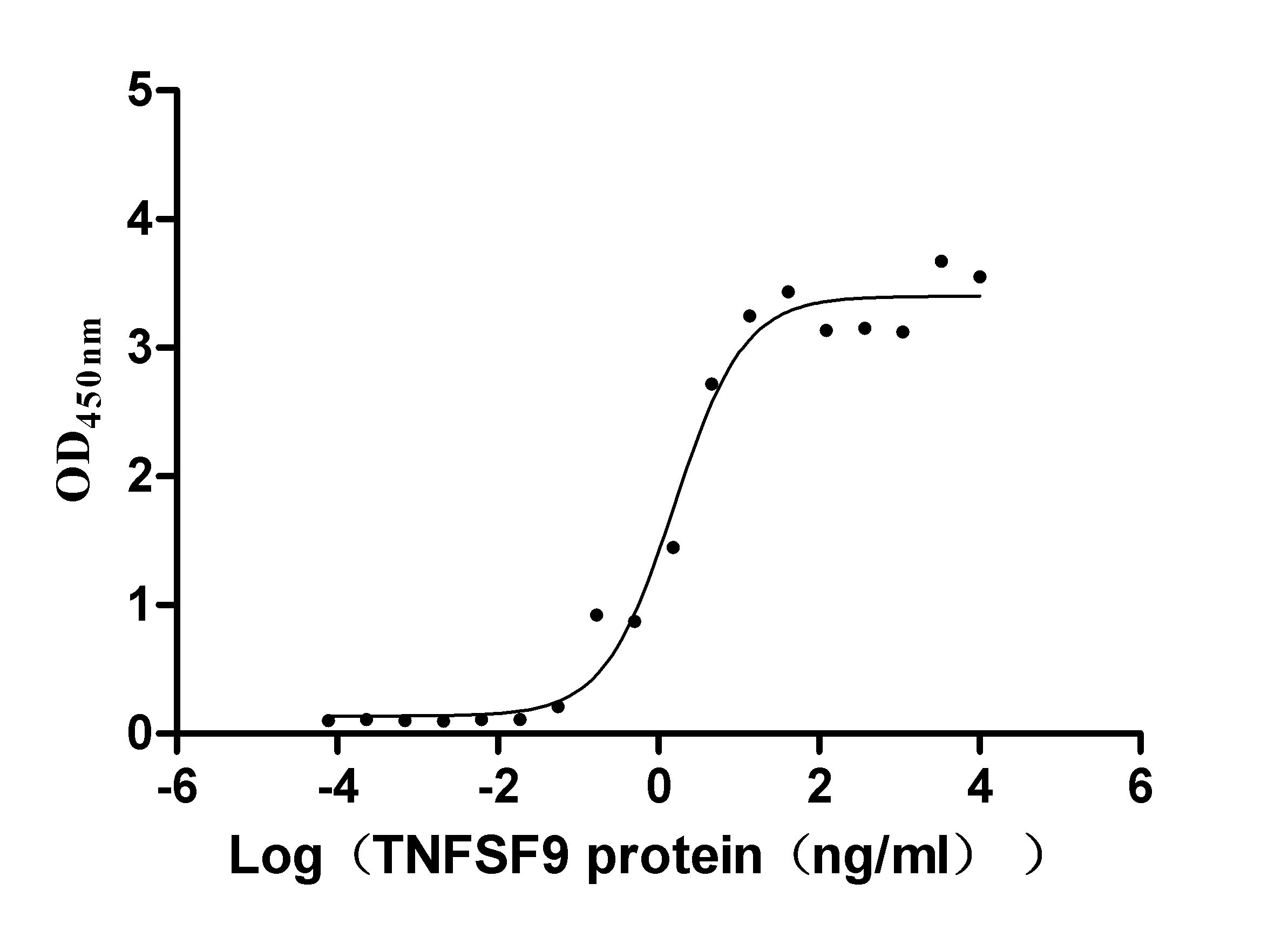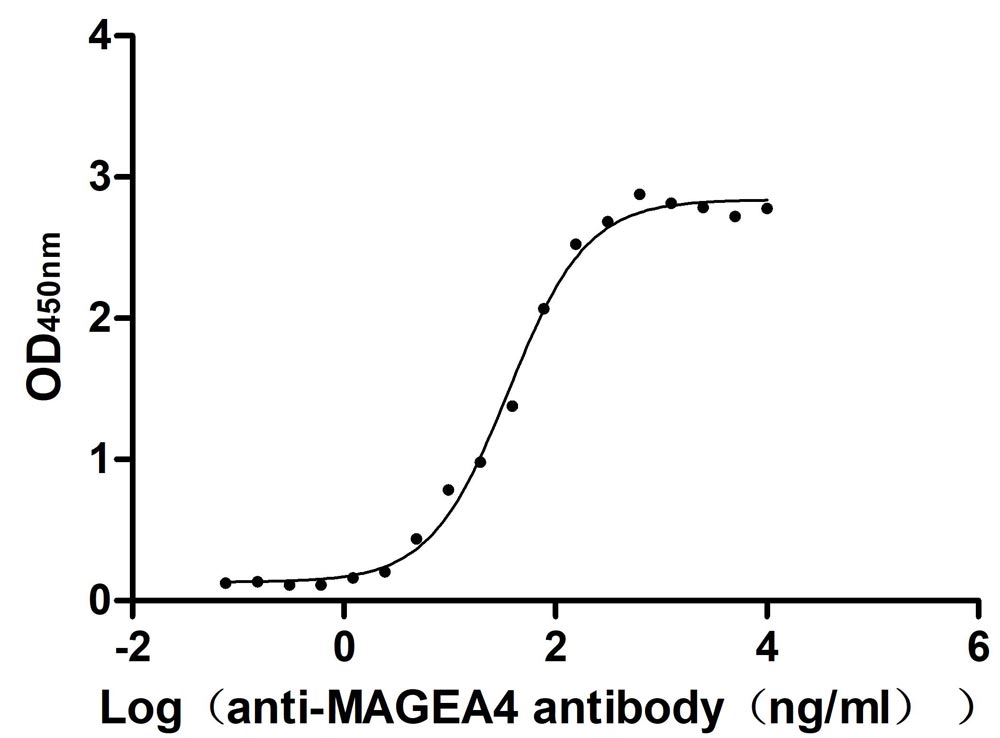Recombinant Human NmrA-like family domain-containing protein 1 (NMRAL1)
-
中文名称:人NMRAL1重组蛋白
-
货号:CSB-YP867194HU
-
规格:
-
来源:Yeast
-
其他:
-
中文名称:人NMRAL1重组蛋白
-
货号:CSB-EP867194HU
-
规格:
-
来源:E.coli
-
其他:
-
中文名称:人NMRAL1重组蛋白
-
货号:CSB-EP867194HU-B
-
规格:
-
来源:E.coli
-
共轭:Avi-tag Biotinylated
E. coli biotin ligase (BirA) is highly specific in covalently attaching biotin to the 15 amino acid AviTag peptide. This recombinant protein was biotinylated in vivo by AviTag-BirA technology, which method is BriA catalyzes amide linkage between the biotin and the specific lysine of the AviTag.
-
其他:
-
中文名称:人NMRAL1重组蛋白
-
货号:CSB-BP867194HU
-
规格:
-
来源:Baculovirus
-
其他:
-
中文名称:人NMRAL1重组蛋白
-
货号:CSB-MP867194HU
-
规格:
-
来源:Mammalian cell
-
其他:
产品详情
-
纯度:>85% (SDS-PAGE)
-
基因名:NMRAL1
-
Uniprot No.:
-
别名:FLJ25918 ; HSCARG; NmrA like family domain containing 1; NmrA like family domain containing protein 1; NmrA-like family domain-containing protein 1; NMRAL1; NMRL1_HUMAN; SDR48A1
-
种属:Homo sapiens (Human)
-
蛋白长度:full length protein
-
表达区域:1-299
-
氨基酸序列MVDKKLVVVF GGTGAQGGSV ARTLLEDGTF KVRVVTRNPR KKAAKELRLQ GAEVVQGDQD DQVIMELALN GAYATFIVTN YWESCSQEQE VKQGKLLADL ARRLGLHYVV YSGLENIKKL TAGRLAAAHF DGKGEVEEYF RDIGVPMTSV RLPCYFENLL SHFLPQKAPD GKSYLLSLPT GDVPMDGMSV SDLGPVVLSL LKMPEKYVGQ NIGLSTCRHT AEEYAALLTK HTRKVVHDAK MTPEDYEKLG FPGARDLANM FRFYALRPDR DIELTLRLNP KALTLDQWLE QHKGDFNLL
-
蛋白标签:Tag type will be determined during the manufacturing process.
The tag type will be determined during production process. If you have specified tag type, please tell us and we will develop the specified tag preferentially. -
产品提供形式:Lyophilized powder
Note: We will preferentially ship the format that we have in stock, however, if you have any special requirement for the format, please remark your requirement when placing the order, we will prepare according to your demand. -
复溶:We recommend that this vial be briefly centrifuged prior to opening to bring the contents to the bottom. Please reconstitute protein in deionized sterile water to a concentration of 0.1-1.0 mg/mL.We recommend to add 5-50% of glycerol (final concentration) and aliquot for long-term storage at -20℃/-80℃. Our default final concentration of glycerol is 50%. Customers could use it as reference.
-
储存条件:Store at -20°C/-80°C upon receipt, aliquoting is necessary for mutiple use. Avoid repeated freeze-thaw cycles.
-
保质期:The shelf life is related to many factors, storage state, buffer ingredients, storage temperature and the stability of the protein itself.
Generally, the shelf life of liquid form is 6 months at -20°C/-80°C. The shelf life of lyophilized form is 12 months at -20°C/-80°C. -
货期:Delivery time may differ from different purchasing way or location, please kindly consult your local distributors for specific delivery time.Note: All of our proteins are default shipped with normal blue ice packs, if you request to ship with dry ice, please communicate with us in advance and extra fees will be charged.
-
注意事项:Repeated freezing and thawing is not recommended. Store working aliquots at 4°C for up to one week.
-
Datasheet :Please contact us to get it.
相关产品
靶点详情
-
功能:Redox sensor protein. Undergoes restructuring and subcellular redistribution in response to changes in intracellular NADPH/NADP(+) levels. At low NADPH concentrations the protein is found mainly as a monomer, and binds argininosuccinate synthase (ASS1), the enzyme involved in nitric oxide synthesis. Association with ASS1 impairs its activity and reduces the production of nitric oxide, which subsecuently prevents apoptosis. Under normal NADPH concentrations, the protein is found as a dimer and hides the binding site for ASS1. The homodimer binds one molecule of NADPH. Has higher affinity for NADPH than for NADP(+). Binding to NADPH is necessary to form a stable dimer.
-
基因功能参考文献:
- These findings suggest that the increased susceptibility of the G6PD-knockdown cells to viral infection was due to impaired NF-kappaB signaling and antiviral response mediated by HSCARG. PMID: 26694452
- Data indicate that HSCARG and USP7 function in concert in inhibiting polyubiquination of NEMO, thus inhibiting NF-kappaB activity. PMID: 24832601
- HSCARG is involved in DNA damage response through affecting the level of H2A ubiquitination and localization of RAP80 at lesion points. PMID: 24711370
- HSCARG regulated reactive-oxygen-species homeostasis through inhibition of NADPH oxidase activity via regulation of the expression of p47phox. PMID: 23527155
- CRM1 dependent nucleocytoplasmic translocation of HSCARG plays an important role in fine-tuning NF-kappaB signaling PMID: 22348310
- HSCARG is involved in the NF-kappaB signaling pathway, and negatively regulates NF-kappaB activation. PMID: 19843583
- expression, crystallization and preliminary X-ray crystallographic studies of HSCARG at a resolution of 2.4 A; crystals belong to F23 space group, with unit cell parameters a=b=c=223.30A, alpha=beta=gamma=90 degrees PMID: 17100653
- One of the functions regulated by HSCARG may be argininosuccinate synthetase that is involved in NO synthesis PMID: 17496144
- HSCARG regulation of argininosuccinate synthetase activity is crucial for maintaining the intracellular balance between redox state and nitric oxide levels PMID: 18263583
- In response to the changes in the NADPH/NADP(+) ratio within cells, HSCARG, as a redox sensor, associates and dissociates with NADPH to form a new dynamic equilibrium. PMID: 19254724
- HSCARG plays critical roles in regulation of NF-kappaB in response to cellular redox changes by promoting ubiquitination and proteolysis of RelA or COMMD1 PMID: 19433587
显示更多
收起更多
-
亚细胞定位:Cytoplasm. Cytoplasm, perinuclear region. Nucleus. Note=Under normal redox growth conditions localizes in the cytoplasm and perinuclear region. Nuclear localization is promoted by increased intracellular nitric oxide and reduced NADPH/NADP(+) ratios.
-
蛋白家族:NmrA-type oxidoreductase family
-
数据库链接:
HGNC: 24987
KEGG: hsa:57407
STRING: 9606.ENSP00000283429
UniGene: Hs.288969
Most popular with customers
-
Recombinant Paguma larvata Angiotensin-converting enzyme 2 (ACE2), partial (Active)
Express system: Mammalian cell
Species: Paguma larvata (Masked palm civet)
-
Recombinant Human Tumor necrosis factor receptor superfamily member 9 (TNFRSF9), partial (Active)
Express system: Mammalian cell
Species: Homo sapiens (Human)
-
Recombinant Human Melanoma-associated antigen 4 (MAGEA4) (Active)
Express system: Mammalian cell
Species: Homo sapiens (Human)
-
Recombinant Human C5a anaphylatoxin chemotactic receptor 1 (C5AR1)-VLPs (Active)
Express system: Mammalian cell
Species: Homo sapiens (Human)
-
Recombinant Human Claudin-9 (CLDN9)-VLPs (Active)
Express system: Mammalian cell
Species: Homo sapiens (Human)
-
Recombinant Human Carcinoembryonic antigen-related cell adhesion molecule 6 (CEACAM6) (Active)
Express system: Mammalian cell
Species: Homo sapiens (Human)
-
Recombinant Human Early activation antigen CD69 (CD69), partial (Active)
Express system: Mammalian cell
Species: Homo sapiens (Human)
-
Recombinant Human Interleukin-2 receptor subunit alpha (IL2RA), partial (Active)
Express system: Mammalian cell
Species: Homo sapiens (Human)




















